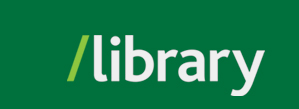One issue that has arisen with the current conflict in Ukraine is the spread of false information about what is happening on the ground. Disinformation has long been used as a war tactic, however, in the modern world is being
This infographic identifies five steps for vetting a news source. It is produced by the News Literacy Project, a nonpartisan nonprofit organization in the US devoted to ensuring that "all students are skilled in news literacy before high school graduation, giving them the knowledge and ability to participate in civic society as well-informed, critical thinkers."
Image source: Screen-capture taken from American Press Institute
Tom Rosenstiel, the executive director of the American Press Institute, suggests six questions media consumers can ask to verify the trustworthiness of their information:
1. What type of content is it?
Is it a news report, opinion piece, or company/political advertising in disguise? Identifying content type and who is behind the literature will help you uncover the motivation.
2. What sources are being cited?
If the information refers to research conducted by a think-tank, track down the study and determine its validity. Look for research methodology, who might benefit from the study, and if there are any special interest groups who might be behind the project.
3. How is the evidence evaluated?
See if the literature explains how the evidence was discovered and introduced to the evaluation process. Be wary of literature that says “scientists agree…” or “research suggests...” without backing it up.
4. Is the reporter’s argument proven by evidence?
Except for straight narratives of an event, most news reports will have some sort of interpretation or a point to the story. See if the point is proven by evidence.
5. Is there anything missing?
Do you notice anything left out of the story? Is there an explanation for any missing piece of information?
6. What knowledge have you acquired?
Rosenstiel urges news consumers to take time and think about what they have learned - if anything - after clicking on a headline and reading a story.

Image Source: Modified screen-capture taken from the National Post.
Click here to read the full article.
1. What type of content is it?
2. What sources are being cited?
3. How is the evidence evaluated?
4. Is the reporter’s argument proven by evidence?
5. Is there anything missing?
Source:
1. Julien, Heidi. (2008). Survey research. In L. M. Given (Ed.), The SAGE Encyclopedia of Qualitative Research Methods. Retrieved from http://dx.doi.org/10.4135/9781412963909.n441
Image source: Screen-capture taken from Slate
Click here to read the article.
1. What type of content is it?
2. What sources are being cited?
3. How is the evidence evaluated?
4. Is the reporter’s argument proven by evidence?
5. Is there anything missing?
Politics is not the only source of bias to watch out for. Also beware of the following:
 |
Commercial Bias News that is sponsored by businesses promoting their products. |
 |
Temporal Bias In order to capture attention, “Breaking News” is featured prominently, while less recent content is made less visible. |
 |
Visual Bias Images evoke emotional responses. Consider any visual content and whether it’s designed to make you feel one way or the other. |
 |
Sensationalism Scandalous or otherwise emotionally-charged stories attract readers by overtly emphasizing negativity. |
 |
Narrative Bias While news reports may follow a plot line from beginning to middle to end, that is most likely not how events unfolded in real life. |
 |
Fairness Bias Opposing points of view will often be presented in the interest of fairness, but intentionally or otherwise, one viewpoint will be given undue weight. |
 |
Expediency Bias To meet deadlines, journalists may interview experts who they have already talked to on multiple occasions. This may bias the coverage to those experts’ points of views. |
For more information on bias in the media please see "Issues of Bias in the News Media: How Our Reality is Shaped by the News" in Media Smackdown: Deconstructing the News and the Future of Journalism.
Adapted from: Finding News and News Evaluation, University of Texas Libraries
Image Sources (From top to bottom):
"Money Bag" by gira Park is licensed under (CC BY 3.0 US)
"Ephemeral" by Matt Brooks is in the public domain (CC0)
"Eye" by Edward Boatman is in the public domain (CC0)
"Senses" by Kyle Berryman is licensed under (CC BY 3.0 US)
"Anecdote" by Marion Lachaise is licensed under (CC BY 3.0 US)
"Scale" by Erik Vullings is in the public domain (CC0)
"Stopwatch" by Gregor Cresnar is licensed under (CC BY 3.0 US)
© , University of the Fraser Valley, 33844 King Road, Abbotsford, B.C., Canada V2S 7M8

